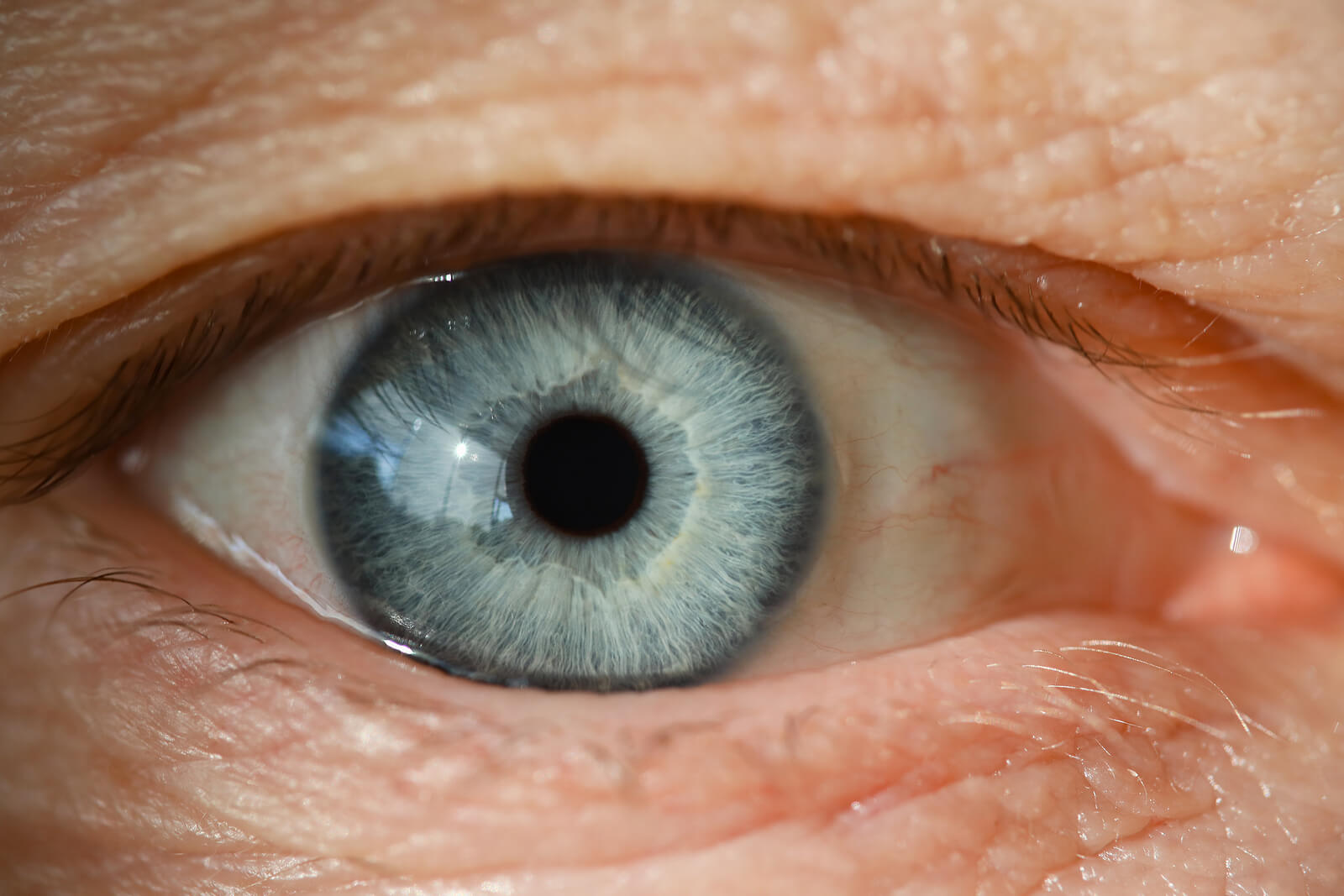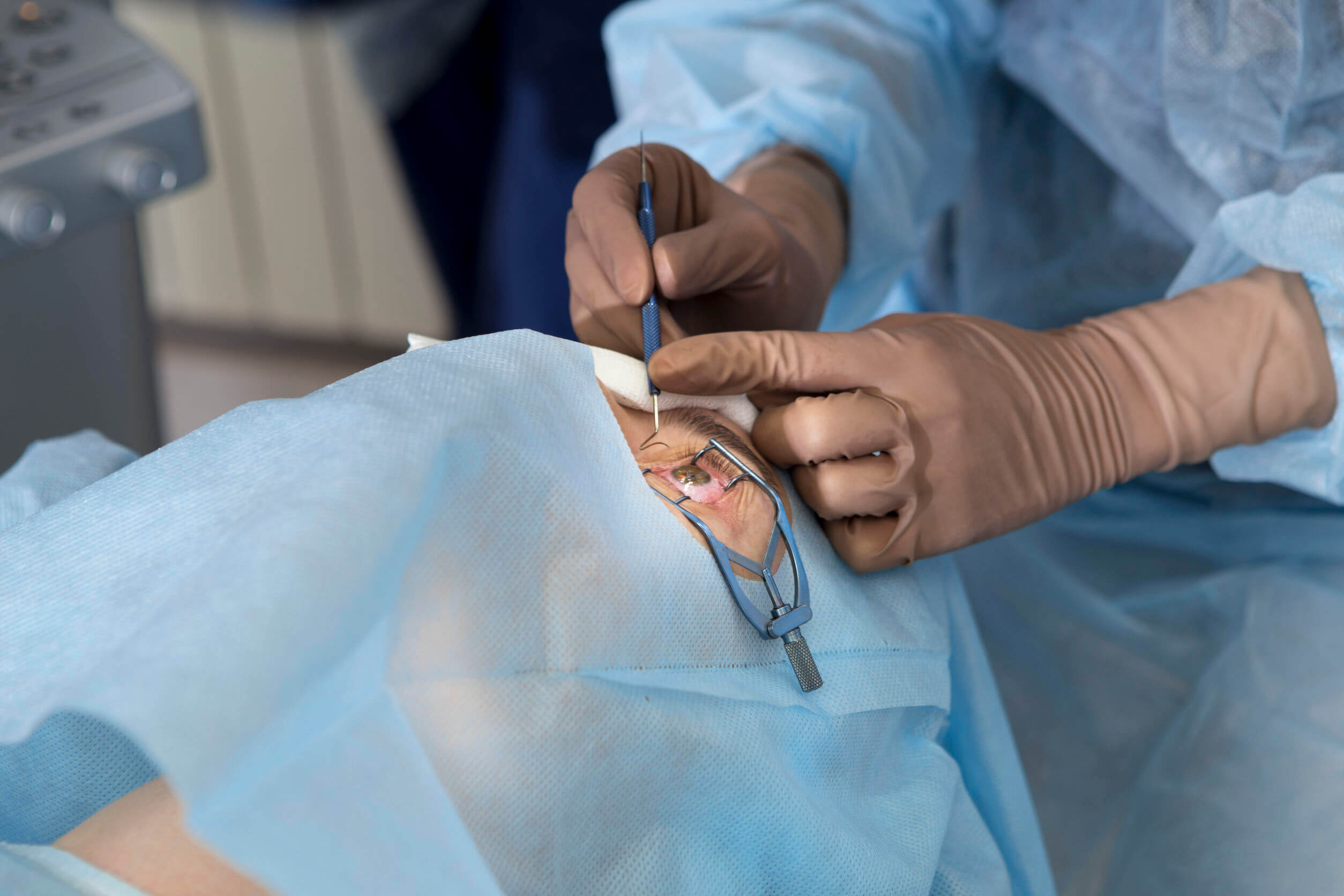What Are Cataracts?

Cloudy films called cataracts commonly form in the lens of the human eye. According to the Centers for Disease Control and Prevention, it’s common for these to appear as part of natural aging, and it’s the leading cause of vision loss in adults over 55 years of age.
These usually cause blurred vision and, depending on the case, treatment can range from using thicker glasses to cataract surgery, which consists of replacing the lens of the eye. We’ll show you everything you need to know about this pathology.
Types of cataracts

Many people have compared the lens to an onion, as it has different layers. The outer part is called the capsule, the middle is known as the cortex, and the inner part is called the nucleus. Thus, the types of cataracts differ depending on which part of the lens they’ve affected. Let’s see more below.
- Nuclear. These types appear in the middle layer of the lens, and make the nucleus take on a yellow or brown color.
- Cortical. Wedge-shaped, these cataracts begin to appear around the inner layer or core.
- Posterior capsular. They tend to develop faster than the previous ones and the area in which they appear is the outer posterior layer of the lens.
Another way to classify cataracts is by how they develop. These include the following:
- Congenital. These form in the newborn baby or in their first year. Fortunately, they aren’t as frequent as other cases.
- Secondary. They are caused by a disease (diabetes, glaucoma, among others) or the intake of certain medications.
- Traumatic. They appear as a result of an injury to the eye. However, there are cases when they take several years to develop.
- By radiation. After undergoing radiation treatment for cancer, cataracts may form.
Symptoms
Cataracts can appear in one or both eyes, although they do not form in unison, they are painless and, initially, they also do not affect vision. However, over time they get worse and visual acuity decreases. The most common symptoms are the following:
- Blurry vision
- Increased sensitivity to light
- See halos around the lights
- Night vision problems
- Color vision deficiency
- Double vision
- Frequent changing of prescription glasses
- Alterations in perception
Also, if left untreated, they can lead to complete blindness.
Causes and risk factors
The crystalline lens, also called the natural lens of the eye, is a structure composed of water and proteins, whose function is to focus light and create clear, sharp images. However, aging causes protein and dead cells to be stored in this part of the eye, forming the cataract and ultimately impairing vision.
In addition to aging, other risk factors include the following:
- Smoking or consuming alcohol excessively.
- Having diseases such as glaucoma or diabetes.
- Suffering an injury to the eye.
- Undergoing radiation therapy.
- Being overweight or obese.
- Being exposed to ultraviolet radiation.
- Using steroids, statins, and other medications for a long time.
- Having eye surgery or having a family history of cataracts.
Diagnosis
If cataracts are suspected, your doctor will perform a complete eye exam. This includes the following:
- Visual acuity test
- Tonometry
- Contrast sensitivity test
- Slit lamp examination
- Retinal exam
- Potential acuity test
Treatment

The only existing cure for cataracts is surgery. However, you should know that when they’re small and don’t affect vision, they don’t need any type of treatment.
In addition, many people live with mild cataracts and combat the symptoms with measures such as wearing stronger corrective lenses, applying artificial tears, and tinting the lenses of the glasses to prevent glare.
However, when cataracts prevent daily activities or affect the treatment of other eye problems, surgery is the first option and shouldn’t be postponed, since the more advanced they are, the more complications can arise during the intervention.
For its part, the procedure can be performed in various ways. One of them is to use phacoemulsification, a method that consists of using ultrasound waves to disintegrate the lens and then remove it through suction.
Another may be extracapsular surgery, characterized by the removal of the lens in one piece, which requires a longer incision and, therefore, may take longer to heal. After surgery, an intraocular lens is placed to replace the lens.
In general, this procedure is considered safe and has a high success rate. However, some of the complications include infection, inflammation, bleeding, retinal detachment, and posterior capsular mist.
These postoperative problems usually appear in 1% of cases and most of those who undergo the intervention can go home the same day.
Prevention
Although there are no therapies or medications to prevent cataracts, a number of habits may help you reduce your risk. Among them are not smoking, controlling diabetes, protecting the eyes from ultraviolet rays, visiting the ophthalmologist regularly and consuming antioxidants and omega-3 fatty acids.
Cloudy films called cataracts commonly form in the lens of the human eye. According to the Centers for Disease Control and Prevention, it’s common for these to appear as part of natural aging, and it’s the leading cause of vision loss in adults over 55 years of age.
These usually cause blurred vision and, depending on the case, treatment can range from using thicker glasses to cataract surgery, which consists of replacing the lens of the eye. We’ll show you everything you need to know about this pathology.
Types of cataracts

Many people have compared the lens to an onion, as it has different layers. The outer part is called the capsule, the middle is known as the cortex, and the inner part is called the nucleus. Thus, the types of cataracts differ depending on which part of the lens they’ve affected. Let’s see more below.
- Nuclear. These types appear in the middle layer of the lens, and make the nucleus take on a yellow or brown color.
- Cortical. Wedge-shaped, these cataracts begin to appear around the inner layer or core.
- Posterior capsular. They tend to develop faster than the previous ones and the area in which they appear is the outer posterior layer of the lens.
Another way to classify cataracts is by how they develop. These include the following:
- Congenital. These form in the newborn baby or in their first year. Fortunately, they aren’t as frequent as other cases.
- Secondary. They are caused by a disease (diabetes, glaucoma, among others) or the intake of certain medications.
- Traumatic. They appear as a result of an injury to the eye. However, there are cases when they take several years to develop.
- By radiation. After undergoing radiation treatment for cancer, cataracts may form.
Symptoms
Cataracts can appear in one or both eyes, although they do not form in unison, they are painless and, initially, they also do not affect vision. However, over time they get worse and visual acuity decreases. The most common symptoms are the following:
- Blurry vision
- Increased sensitivity to light
- See halos around the lights
- Night vision problems
- Color vision deficiency
- Double vision
- Frequent changing of prescription glasses
- Alterations in perception
Also, if left untreated, they can lead to complete blindness.
Causes and risk factors
The crystalline lens, also called the natural lens of the eye, is a structure composed of water and proteins, whose function is to focus light and create clear, sharp images. However, aging causes protein and dead cells to be stored in this part of the eye, forming the cataract and ultimately impairing vision.
In addition to aging, other risk factors include the following:
- Smoking or consuming alcohol excessively.
- Having diseases such as glaucoma or diabetes.
- Suffering an injury to the eye.
- Undergoing radiation therapy.
- Being overweight or obese.
- Being exposed to ultraviolet radiation.
- Using steroids, statins, and other medications for a long time.
- Having eye surgery or having a family history of cataracts.
Diagnosis
If cataracts are suspected, your doctor will perform a complete eye exam. This includes the following:
- Visual acuity test
- Tonometry
- Contrast sensitivity test
- Slit lamp examination
- Retinal exam
- Potential acuity test
Treatment

The only existing cure for cataracts is surgery. However, you should know that when they’re small and don’t affect vision, they don’t need any type of treatment.
In addition, many people live with mild cataracts and combat the symptoms with measures such as wearing stronger corrective lenses, applying artificial tears, and tinting the lenses of the glasses to prevent glare.
However, when cataracts prevent daily activities or affect the treatment of other eye problems, surgery is the first option and shouldn’t be postponed, since the more advanced they are, the more complications can arise during the intervention.
For its part, the procedure can be performed in various ways. One of them is to use phacoemulsification, a method that consists of using ultrasound waves to disintegrate the lens and then remove it through suction.
Another may be extracapsular surgery, characterized by the removal of the lens in one piece, which requires a longer incision and, therefore, may take longer to heal. After surgery, an intraocular lens is placed to replace the lens.
In general, this procedure is considered safe and has a high success rate. However, some of the complications include infection, inflammation, bleeding, retinal detachment, and posterior capsular mist.
These postoperative problems usually appear in 1% of cases and most of those who undergo the intervention can go home the same day.
Prevention
Although there are no therapies or medications to prevent cataracts, a number of habits may help you reduce your risk. Among them are not smoking, controlling diabetes, protecting the eyes from ultraviolet rays, visiting the ophthalmologist regularly and consuming antioxidants and omega-3 fatty acids.
- Centers for Disease Control and Prevention [Published 2019 Jan 4]. Vision Health Initiative (VHI) – Common Eyes Disorders and Diseases. Available from: https://www.cdc.gov/visionhealth/basics/ced/index.html
- American Optometric Center. Cataract. Available from: https://www.aoa.org/healthy-eyes/eye-and-vision-conditions/cataract?sso=y
- American Academy Ophthalmology. [Published 2020 Dec 11]. Cataracts. Available from: https://www.aao.org/eye-health/diseases/what-are-cataracts
- Gupta, V. B., Rajagopala, M., & Ravishankar, B. (2014). Etiopathogenesis of cataract: an appraisal. Indian journal of ophthalmology, 62(2), 103–110. https://doi.org/10.4103/0301-4738.121141
- National Eye Institute [Updated 2019 Agu 3]. Cataracts. Available from: https://www.nei.nih.gov/learn-about-eye-health/eye-conditions-and-diseases/cataracts#section-id-5603
- Stein J. D. (2012). Serious adverse events after cataract surgery. Current opinion in ophthalmology, 23(3), 219–225. https://doi.org/10.1097/ICU.0b013e3283524068
- Weikel, K. A., Garber, C., Baburins, A., & Taylor, A. (2014). Nutritional modulation of cataract. Nutrition reviews, 72(1), 30–47. https://doi.org/10.1111/nure.12077
Este texto se ofrece únicamente con propósitos informativos y no reemplaza la consulta con un profesional. Ante dudas, consulta a tu especialista.







